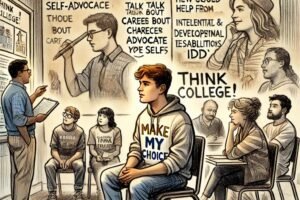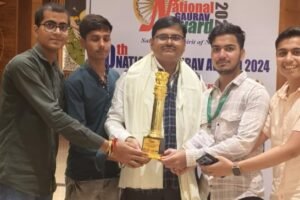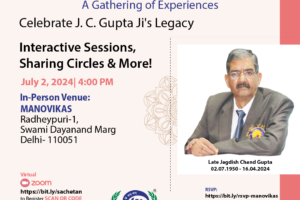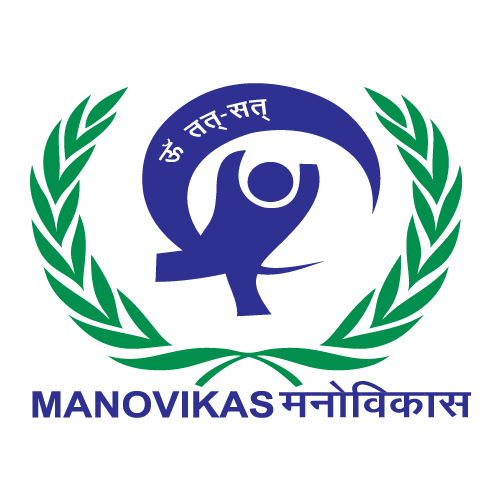
Person with disability
- Posted by Manovikas eGyanshala
- Categories Advocacy, Disability
- Date January 30, 2022
Person with disability means a person with long term physical, mental, intellectual or sensory impairment which, in interaction with barriers, hinders his full and effective participation in society equally with others.
Under the Rights of Persons with Disabilities Act, 2016 (RPD Act 2016) three major perspective to consider any individual as person with disability (Divyangjan) –
- Person with specified disability
- Person with benchmark disability
- Person with disability having high support needs
THE SCHEDULE
[See clause (zc) of section 2]
SPECIFIED DISABILITY
1. Physical disability.—
A. Locomotor disability (a person’s inability to execute distinctive activities associated with movement of self and objects resulting from affliction of musculoskeletal or nervous system or both), including—
(a) “leprosy cured person” means a person who has been cured of leprosy but is suffering from—
(i) loss of sensation in hands or feet as well as loss of sensation and paresis in the eye and eye-lid but with no manifest deformity;
(ii) manifest deformity and paresis but having sufficient mobility in their hands and feet to enable them to engage in normal economic activity;
(iii) extreme physical deformity as well as advanced age which prevents him/her from undertaking any gainful occupation, and the expression “leprosy cured” shall construed accordingly;
(b) “cerebral palsy” means a Group of non-progressive neurological condition affecting body movements and muscle coordination, caused by damage to one or more specific areas of the brain, usually occurring before, during or shortly after birth;
(c) “dwarfism” means a medical or genetic condition resulting in an adult height of 4 feet 10 inches (147 centimeters) or less;
(d) “muscular dystrophy” means a group of hereditary genetic muscle disease that weakens the muscles that move the human body and persons with multiple dystrophy have incorrect and missing information in their genes, which prevents them from making the proteins they need for healthy muscles. It is characterised by progressive skeletal muscle weakness, defects in muscle proteins, and the death of muscle cells and tissue;
(e) “acid attack victims” means a person disfigured due to violent assaults by throwing acid or similar corrosive substances.
B. Visual impairment—
(a) “blindness” means a condition where a person has any of the following conditions, after best correction—
(i) total absence of sight; or
(ii) visual acuity less than 3/60 or less than 10/200 (Snellen) in the better eye with best possible correction; or
(iii) limitation of the field of vision subtending an angle of less than 10 degree.
(b) “low-vision” means a condition where a person has any of the following conditions, namely:—
(i) visual acuity not exceeding 6/18 or less than 20/60 upto 3/60 or upto 10/200 (Snellen) in the better eye with best possible corrections; or
(ii) limitation of the field of vision subtending an angle of less than 40 degree up to 10 degree.
C. Hearing impairment—
(a) “deaf” means persons having 70 DB hearing loss in speech frequencies in both ears;
(b) “hard of hearing” means person having 60 DB to 70 DB hearing loss in speech frequencies in both ears;
D. “speech and language disability” means a permanent disability arising out of conditions such as laryngectomy or aphasia affecting one or more components of speech and language due to organic or neurological causes.
2. Intellectual disability, a condition characterised by significant limitation both in intellectual functioning (rasoning, learning, problem solving) and in adaptive behaviour which covers a range of every day, social and practical skills, including—
(a) “specific learning disabilities” means a heterogeneous group of conditions wherein there is a deficit in processing language, spoken or written, that may manifest itself as a difficulty to comprehend, speak, read, write, spell, or to do mathematical calculations and includes such conditions as perceptual disabilities, dyslexia, dysgraphia, dyscalculia, dyspraxia and developmental aphasia;
(b) “autism spectrum disorder” means a neuro-developmental condition typically appearing in the first three years of life that significantly affects a person’s ability to communicate, understand relationships and relate to others, and is frequently associated with unusal or stereotypical rituals or behaviours.
3. Mental behaviour,—
“mental illness” means a substantial disorder of thinking, mood, perception, orientation or memory that grossly impairs judgment, behaviour, capacity to recognise reality or ability to meet the ordinary demands of life, but does not include retardation which is a conditon of arrested or incomplete development of mind of a person, specially characterised by subnormality of intelligence.
4. Disability caused due to—
(a) chronic neurological conditions, such as—
(i) “multiple sclerosis” means an inflammatory, nervous system disease in which the myelin sheaths around the axons of nerve cells of the brain and spinal cord are damaged, leading to demyelination and affecting the ability of nerve cells in the brain and spinal cord to communicate with each other;
(ii) “parkinson’s disease” means a progressive disease of the nervous system marked by tremor, muscular rigidity, and slow, imprecise movement, chiefly affecting middle-aged and elderly people associated with degeneration of the basal ganglia of the brain and a deficiency of the neurotransmitter dopamine.
(b) Blood disorder—
(i) “haemophilia” means an inheritable disease, usually affecting only male but transmitted by women to their male children, characterised by loss or impairment of the normal clotting ability of blood so that a minor would may result in fatal bleeding;
(ii) “thalassemia” means a group of inherited disorders characterised by reduced or absent amounts of haemoglobin.
(iii) “sickle cell disease” means a hemolytic disorder characterised by chronic anemia, painful events, and various complications due to associated tissue and organ damage; “hemolytic” refers to the destruction of the cell membrane of red blood cells resulting in the release of hemoglobin.
5. Multiple Disabilities (more than one of the above specified disabilities) including deaf blindness which means a condition in which a person may have combination of hearing and visual impairments causing severe communication, developmental, and educational problems.
6. Any other category as may be notified by the Central Government.
You may also like

एक छोटा सा गाँव और एक बड़ी चाह

National Gaurav Award 2024

